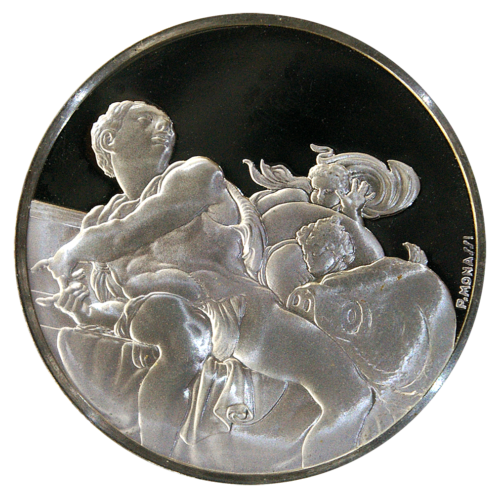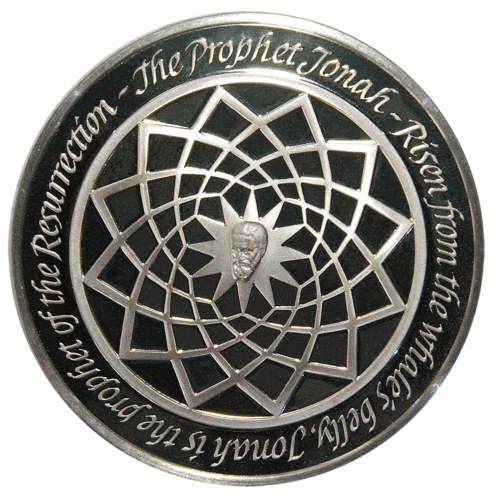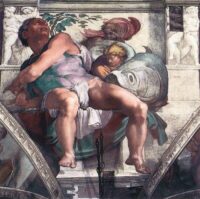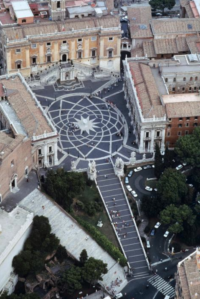M088 (See also M246)
Sterling Silver, UNC
44 mm (1-3/4”), 42.2 grams
HISTORY: Born Michelangelo de Lodovico Buonarroti Simoni (1475‒1564), in Florence, Italy, Michelangelo’s genius influenced the lives of people throughout the centuries. The Franklin Mint set out to commemorate the life of this unsurpassed artist. They commissioned Italian sculptor Piero Monassi to create a series of 60 medals in honor of Michelangelo’s 500th birthday, based on Michelangelo’s many works. The first medal was issued in 1970 and proceeded until conclusion in 1976.
OBVERSE: This medal features the dramatic painting on the Sistine Chapel walls of an Old Testament biblical scene ‒ Jonah being tossed upon shore from the mouth of a great fish (Jonah 1:17 and 2:10, see Detail 1). This fish, however, is no whale. There has been some mystery regarding why Michelangelo painted what appears to be a giant Tarpon instead of a whale. The Italian word for whale is “balena,” whereas the Hebrew word for a whale (or any unknown large sea creature), was “livyatan” (leviathan). So, the popular interpretation would have been a really big fish. With the publication of the Authorized King James Version of The Holy Bible in 1611 (46-years after Michelangelo’s death), livyatan was officially translated into English as a great fish. Sometime, in the history of folklore, the great fish morphed into a whale.
REVERSE: This reverse design was used on all the medals in the “Genius” series. The calligraphic message in the outer ring describes the obverse scenes, in this case, “The Prophet Jonah – Risen from the whale’s belly, Jonah is the prophet of the Resurrection.” Radiating from the center is a 12-point lattice representing the universe, and within the center is a 12-point star, called Caput Mundi (Latin for “Head of the World”). This design was created by Michelangelo in 1546 for the Piazza del Campidoglio in Rome (see Detail 2). Michelangelo was commissioned as architect for design of the Piazza, construction of which would take another three centuries to complete.
The geometric design of the plaza surface, however, was never realized until 1940, when Italian Prime Minister Benito Mussolini (1883‒1945), ordered the pavement to be completed as Michelangelo envisioned.
In the center of the 12-point star, to this day, is a replica of the equestrian mounted Marcus Aurelius (AD 121‒180). Monassi, instead, uses this medal to feature a portrait of Michelangelo at the radiant center.
EDGE: At the top is “STERLING ©” followed by “FM” mint mark and “75” mark (the mint year 1975). The bottom reads “THE GENIUS OF MICHELANGELO” followed by “-5.”




